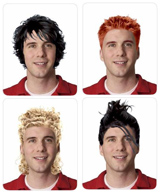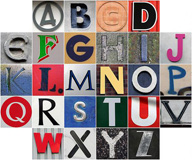GET SMART BEFORE YOU START.- Session 1.- What do you do?
GET SMART BEFORE YOU START.- Session 1.- What do you do?
Caso práctico

This is Rebecca, a computer programmer. Listen to her talking about her job.
Interviewer: Hi Rebecca, can you tell us about your job?
Rebecca: Well, I'm a computer programmer. I work for a multinational company and at the moment we're developing an in-house programme. I'm part of a multidisciplinary team and I'm in charge of security fire walls. I have to make it secure enough to prevent hackers from accessing our system.
Interviewer: What's your working timetable like?
Rebecca: Umm, we have a system of flexitime in my company, which means that we can work when we want, within certain limits. We can start at anytime till 10, and finish as early as 2 but we have to do 30 hours at the office each week. It's ideal for people who have young children.
Voz1: And what about your working day routine?
Rebecca: I get up very early because, though I work in London, I prefer living outside the city, so I commute to work every day, like thousands of other commuters…
I work for five or six hours depending on the amount of work we have and have lunch at the canteen with some workmates. Every day is a totally new experience and we never know what to expect, but if we get too stressed we even have a free time area to relax and chat for a while!
Interviewer: Is your work stimulating?
Rebecca: Yes, quite. My work involves a lot of mental effort but also a lot of teamwork between the developers. At times it can be very tiring but it's very satisfying to write a program that works.
Interviewer: And what about your salary if I may ask?
Rebecca: Well, I'm not a fat cat myself but I guess I get a good salary. I have a basic salary plus a bonus rated according to the company's satisfaction level. I have a health plan as well to pay the cost of medical treatment if I get ill, and the company makes payments for my pension. Oh and I also have a free mobile and a free laptop to take some work home!
So with the bonus, the health plan and the pension I have a nice benefits package. What else can I ask for?
Interviewer: Yeah definitely!
Autoevaluación
Think about it

1.- What to say. Introducing yourself.

Introducing yourself is something you must learn and know how to do properly. Next, you will see several ways, both formal and informal, to introduce yourself. Read these structures and pay attention to the possible answers too.
Formal expressions used to introduce yourself:
- What's your name? / And you are called?
- I am.../ My name is...
- Excuse me, but are you Mrs/Mr...?
- Yes, that's right
- You must be... (When you know the name)
- May introduce myself? My name is .../I'm... (Shake hands)
- Let me introduce myself. I'm ...
- I'm sorry. We haven't been introduced. My name is... (When you want to know the name)
- Sorry, I didn't catch your name (When you don't hear someone's name)
- How do you do? How do you do?
Informal expressions used for introductions:
- Hello, my name is... /I'm ..., but people call me... (nickname) (Shake hands)
- Hi, I´m ...
- You are ...?
- I'm...
- I'm glad to meet you / Pleased to meet you / Nice to meet you
- Nice to meet you, too.
Think about it
Today is Julia's first day in her job. How does she introduce herself? Complete the following dialogue between Julia, a workmate and the manager.
JULIA SALINGER: (introduce / myself? / name).
WORKMATE: Hello, Julia. I'm John.
JULIA:( you / do?).
WORMATE: How do you do? (They shake hands)
MANAGER: Excuse me. Are you Ms. Salinger?
JULIA: (right).
MANAGER: Let me introduce myself, I am Mr Smith, the manager. But, please, call me Peter.
JULIA: (sorry / no / catch /name).
MANAGER: Peter, I am Peter. Nice to meet you.
JULIA: (nice / too)
A step ahead
It is important to have social language. Here you can get some practice on greetings and introductions.
1.1.- Telling the Time.

When we want to know the time the question in English is:
- What time is it?
- What's the time?
Other possibilities are:
- Do you know the time?
- Can you tell me the time, please?
- Could you tell me the time, please?
- Have you got the time on you?
- Would you mind telling me the time?
In formal English we use 'a.m.' and 'p.m.' after the time.
- My office is open from 9.30 a.m. to 3:00 p.m.
In colloquial English we normally say: "In the morning", "In the afternoon", "In the evening", "At night".
- What time is it? It's six o'clock in the morning (6:00 a.m.)
- What time does the plane leave? The plane leaves a thalf past seven in the evening (7:30 p.m.)
These are the rules for telling the time in English:
-
past: We use "past" to say times after the hour till half past (30 minutes past the hour)
- 15:10- It's ten past three
- 15:15- It's a quarter past three
-
08:30- It's half past eight.
-
to: We use "to" to say times before the hour till the full hour. (29 minutes until the full hour).
-
16:35- It´s twenty-five to five
-
-
o'clock: We use "o'clock" only at the full hour.
- 18:00 = It's six o'clock
- 12:00 = midday
- 24:00 = midnight
When speaking about transport, we use the international time division. (24 hours). In this case, we just read the numbers.
- The London train arrives in Leeds at 18:30. (We should read "sixteen thirty")
Autoevaluación
Write the correct times.
For example: 3:40 It is twenty to four
2.- How to say it. Present Simple: Use.
Citas Para Pensar
"Time present and time past
Are both perhaps present in time future,
And time future contained in time past.
If all time is eternally present
All time is unredeemable."
T.S. Eliot.

We are sure you are already familiar with the use of the Present Simple. It's the first tense you learn in English!
The Present Simple tense is used to express:
-
Permanent states and facts.
- What do you do? I'm an accountant.
-
They speak English in New Zealand.
-
Habits and scheduled routines.
- We never work on Saturdays.
-
The train leaves at 05:30 p.m.
-
Thoughts and feelings with verbs such as think, believe, promise, like, love, hate, etc.
- Many people think secretaries only make coffee.
-
I don't like filing documents.
-
Events in the future for which there is a written or official timetable:
- What time does the plane land? The plane lands at seven.
Ejercicio Resuelto
Think about it
These are some common mistakes made when using the present simple:
- She don't want to tell us the truth.
- Does he likes travelling?
2.1.- Present Simple: Form.

How to make the Present Simple:
The third person singular of the verb adds "-s" or "-es"
"-es" is added for verbs ending in:
- "-ch" She watches TV all day.
- "-sh" She always washes her hands before eating.
- "-o" He goes to the city. She does the exercises.
- "-s" She misses you a lot when you are away.
- "-x" He mixes a lot of styles of music in his latest record.
-
"-z" The bee buzzes when it's flying.
-
If the verb ends in "-y" preceded by a consonant, replace the "y" with "i" and add "-es"
-
She studies at University.
-
-
Negative Form:
Subject + DO / DOES (NOT) / DON'T / DOESN'T + Verb
- I don't like living in a big city.
-
He doesn't like living in a small town.
-
Interrogative Form:
DO / DOES + Subject + Verb?
- Do you like travelling?
- Does he go to the cinema very often?
Ejercicio Resuelto
2.2.- Now you put it into practice (I).
Autoevaluación
Autoevaluación
Read the paragraph below and fill in the missing verbs in the present tense. Chose from the list below.
2.3.- Questions.
Citas Para Pensar
"To be, or not to be, that is the question"
William Shakespeare.

When learning a language you soon need to ask a lot of questions. This is what we are learning here, to ask questions. Curiosity may have killed the cat, but I'm sure it's good for you.
-
Questions with yes/no answers begin with an auxiliary or modal verb (is, are, do, does, can...) followed by the subject. We usually answer these questions with yes or no.
- Can he type letters? Yes, he can.
- Does she work for a tour operator? No, she doesn't.
Negative questions are formed with not, but there is a difference in the word order between the short form and the full form.
- Full form: auxiliary+subject+not+verb. Do you not like the working hours?
- Short form: auxiliary+n't+subject+verb. Don't you like the working hours?
We use negative questions in speech:
-
To ask for confirmation.
-
This is a great restaurant! Wouldn't it be nice to come here more often?
-
-
To express surprise, admiration or annoyance.
- Don't you know how to make a reservation?
- Isn't she a great guide?
-
Can't you be quiet for one minute?
-
-
Wh- questions begin with a question word (Who / Whose /What / Which / When/ Where/ Why / How).
-
Who is used without a noun to ask about people.
-
Who do you want to see? The manager.
-
-
Whose is used to ask about possession.
-
Whose is that car? It's Carla's.
-
-
What is used alone or before a noun to ask about things.
- What time did you get up yesterday?
-
What are you doing?
-
What is also used to talk about people, animals or things when there is an unlimited choice of answers.
-
What countries have you visited?
-
-
Which is used alone, before nouns, before one/ones or before of, to ask about people, animals or things. It is normally used when there is only a limited choice of answers.
- Which is our rental car?
-
Which option do you like best, train or coach?
-
Where is used to ask about places.
-
Where is the nearest post office?
-
-
When is used to ask about time.
-
When is he arriving?
-
-
Why is used to ask about reasons.
-
Why do you recommend local restaurants?
-
-
How is used alone or before an adjective or an adverb to ask about manner.
- How did you get to Prague? By train.
- How old are you? Twenty-five.
- How long ago did you start work? Two years ago.
- How often do you travel abroad? Three times a year at least.
-
Ejercicio Resuelto
2.4.- Subject/Object Questions.

Subject and object questions is something you may not be familiar with because we don't have a similar thing in Spanish. It may sound confusing but in reality it is quite simple.
- Object questions are questions we ask when we want to know the object of the sentence. If the question word is not the subject of the sentence, we use the auxiliary verb.
Question word + auxiliary verb + subject + main verb?
- How often do you have coffee?
-
Where does he live?
-
We ask subject questions ask when we want to know the subject of the sentence. If the question word is the subject of the sentence, we don't use the auxiliary verb.
Question Word+ main verb?
- Who works at the Paris office?
- Which costs more, the red or the white?
In object questions if a verb is followed by a preposition, the proposition usually comes at the end of the sentence.
- Where are you from?
Ejercicio Resuelto
Think about it
Some common mistakes when asking questions are:
- Who does work with you at the restaurant?
- Does he likes dancing?
Can you correct them?
2.5.- Now you put it into practice(II).
Autoevaluación
Think about it
Make suitable questions for these answers.
- We're going to Brighton.
- We're doing sightseeing there.
- We're leaving on 23rd October.
- I'm going with Christopher.
- We are staying at a youth hostel.
- I need only ₤500.
- The flight ticket costs ₤250.
- We are going to the airport by car.
- I'll phone you everyday.
- Because I like travelling.
2.6.- Adverbs of frequency.
Citas Para Pensar
"The key to wisdom is this - constant and frequent questioning... for by doubting we are led to question and by questioning we arrive at the truth."
Peter Abelard
The first type of adverbs we are going to learn is adverbs of frequency, which are very useful to talk about your habits.
Adverbs of frequency go after auxiliary verbs, modal verbs and the verb to be, but before main verbs.
- The baby always cries when she is hungry.
- I often go to the cinema.
- The baby is always crying.
- I have always liked travelling.
You can also find the adverbs "often", "usually", "sometimes" and "occasionally" at the beginning of a sentence or at the end of it.
- Sometimes I go swimming to the seaside.
-
I go swimming to the seaside sometimes.
Middle Position : Subject + (Aux. verb) + adverb + Main Verb
- The baby always cries when she is hungry.
- The baby is always crying.
- We usually go to Córdoba on holidays.
- I normally drink three cups of coffee a day.
- They sometimes come with us on our holidays.
- She often likes going out for dinner.
- I seldom/rarely smoke.
- Have you ever been to Spain?
- I hardly ever sing songs except when having a bath.
-
I never drink before driving.
Also: Initial and Final Position
- Sometimes English is difficult to understand.
- Today, children eat fish occasionally.
- Nowadays, people read books very seldom.
Ejercicio Resuelto
Autoevaluación
Write the words in the correct order to form a sentence.
- his/finished/already/dinner/He
- yet/you/?/Are/ready
- have/We/time/still
- happy/I/really/see/am/you/to
- quickly/speak/very/You
- never/eats/She/vegetables
- They/late/class/always/are/to
- waiting/I/still/am
- there/?/yet/he/Is
2.7.- Frequency Expressions.

From always to never, there is a frequency scale you should learn by using the adverbs.
Frequency scale:
- Always
- Ever
- Usually / Normally
- Often
- Frequently
- Sometimes
- Occasionally
- Seldom / Rarely
- Hardly ever
- Never
Some end-of-sentence expressions to indicate frequency are:
- Once a week
- Twice a week
- Four times a year
- Five times a month
- Every now and then
- From time to time
Initial position is also common if the adverb is not the main focus of the sentence.
- Once a week he goes to the hairdresser's and gets a new hairstyle .
They usually answer questions starting with "how often" and "how many times".
- How often do you receive customers' complaints?
- How many times a month do you visit relatives?
Ejercicio Resuelto
Think about it
Some common mistakes with frequency adverbs are:
- The baby always is crying.
- I go dancing rarely.
Can you correct them?
Autoevaluación
I would like to tell you about my brother. Rearrange the words and write them in the right order to see what he is like. Pay attention to the position of the adverbs in the sentence.
- rarely / My brother / cooks / any kind /of soup/
- goes / He / to nightclubs / never /
- have dinner?/ does / What time / usually / he /
- doesn't /He / often /spirits/ drink/
- usually / He /by bus/ go to work / doesn't / /
- he / Does / do the ironing/ always / himself?/
- normally / he / does / What / on his holidays?/
- He / can / sometimes / be / very / nasty to / people/
- He / listens / often / before / to music / going to bed /
- He / never / is / when / home / at / phone/ I /
- He / late/ gets up / seldom /
- always / for breakfast / has /
- usually / He / work / starts / at 8.00/
- He / listen to / doesn't / normally / in his work / music/
- never / in his work/ smokes / He /
- never / is / He / in his free time / sleeping /
- He / in his work/ makes / sometimes / mistakes /
- often / He / back / goes / home / foot/ on /
- drives / He / never / home/ back /
- always / cooks / He / meals/ homemade /
- never / watches / He / the / news/ evening /
- always / is / He / complaining / everything/ about /
- He / ever / hardly / before twelve/ to bed / goes /
- with people / often / He / shy / is /
- ever / been / he / Has / England
2.8.- Sounds and spelling.
Citas Para Pensar
"Hello? Is that the reference desk at the library? Yes, I need a word definition. Well, that's the problem. I don't know how to spell it and I'm not allowed to say it. Could you just tell me all the swear words you know and I'll stop you when... Hello?"
Calvin (Fictional character from the comic series Calvin & Hobbes).
In writing, words are made of letters. In speech, words are made of sounds. Letters are not always the same as sounds. The words car and key begin with the same sound but the letters are not the same.

There are 26 letters in the English alphabet but there are 44 sounds in the English language. This means that the number of sounds in a word is not always the same as the number of letters. The word cat has three letters and three sounds but the word catch has five letters but still only three sounds. If we write these words using phonemic symbols, we can see exactly how many sounds they have.
Cat is pronounced /kæt/.
Catch is pronounced /kæʧ/.
In catch the three letters "tch" are one sound represented by one phonemic symbol /ʧ/
Some sounds in English do not exist in Spanish. Others are similar but not exactly the same. This can make it difficult to hear and make the distinction between two similar words in English.
Ejercicio Resuelto
A step ahead
To learn more about the characteristics of English pronunciation, visit the BBC Learning English site.
Autoevaluación
2.9.- The alphabet.
Citas Para Pensar
"I wonder if illiterate people get the full effect of alphabet soup"
Jerry Seinfield.
Because of the difference between what we say and how we write it, spelling is very important in English especially with words you do not know, like names of places or people. Listen to the English sounds of the alphabet. Then, repeat them.

A - B - C - D - E - F - G - H - I - J - K - L - M - N - O - P - Q - R - S - T - U - V - W - X - Y - Z
Now the letters are in groups according to their sounds.
- A - H - J - K /ei/
- B - C - D - E - G - P - T - V /i:/
- F - L - M - N - S - X - Z /e/
- I - Y /ai/
- /ou/
- U - Q - W /ju:/
- R /a:/
You can notice some differences between the Spanish and the English alphabet.
The English alphabet doesn't have the letters "ch" or "ñ". The latter doesn't appear in English or American keyboards.
Did you notice a difference in pronunciation between the letters "b" and "v"? In English "b" is a bilabial sound, pronounced when you join the two lips while "v" is a labio dental sound, pronounced with the upper teeth resting on the lower lip. In Spanish, both "b" and "v" are normally pronounced in the same way.
The English letter "h" is pronounced with an aspiration. In Spanish we never pronounce "h".
The English letter "z" is pronounced very differently to the Spanish "z".
When there are two same letters when you are spelling, use double.
- letter: L-E-double T-E-R
Ejercicio Resuelto
Think about it
A few alphabet jokes:
- Why is the letter C like a magician?
- Why is the letter E lazy?
- When were there only 3 vowels in the alphabet?
- Why is an island like the letter T?
- What eight-letter word has only one letter in it?
A step ahead
To revise the alphabet enjoy the classic Sesame Street Alphabet song by Manhattan Transfer.
2.10.- Stress-timed vs. syllable-timed languages.

Languages can be classified according to whether they are stress-timed or syllable-timed.
In a stress-timed language (like English) the stresses are equal distances apart even though the number of syllables between each stress is not the same. This means that some syllables have to be said very quickly if there are several between two stresses, and some are said slowly if there are few between two stresses.
In syllable-timed languages, the syllables occur at regular intervals (as in Spanish).
The main differences between stress-timed and syllable-timed languages lie in syllable structure (syllable length varies more in stress-timed languages than in syllable-timed languages), vowel reduction (in stress-timed languages vowels in unstressed syllables may be shortened or omitted), and lexical stress (stress-timed languages usually have word level stress). This means that in English we have short and long vowels, weak and disappearing vowels and stress patterns very different from Spanish. And that is why sometimes it is so difficult to understand!
Learners whose first language can be described as syllable-timed often have problems recognising and then producing features of English such as contractions, main and secondary stress, and elision. It is important to observe and copy the rhythmic patterns of speech.
Activities which can help you with recognition of these features of English include counting the number of words in a spoken sentence and sorting long words according to stress patterns.
In this section we are going to learn words that have to do with jobs and work. Do you know the difference between these two words? Job is countable. It means the actual position. Work is uncountable and is more general. If you do not know the difference between countable and uncountable, we will get there too, but in another unit.
A good pronunciation is important, but do not get obsessed, practice will help you achieve a pronunciation that everybody will understand.
Ejercicio Resuelto
A step ahead
Here you can find out about features of the English language including pronunciation vocabulary, grammar and stress patterns.
3.- Words you need.
Think about it
What are the differences between "work" and "job"?
"experience".
Here are some words that have to do with jobs.

| Work-related word | Translation & Example |
|---|---|
| job | Trabajo, empleo (contable). "She has got 2 jobs". (Tiene 2 empleos) |
| work | Trabajo (incontable). "He hasn't got much work". (No tiene mucho trabajo) |
| career | Carrera profesional, profesión. It is a false friend. When you finish university, you "take a degree". |
| appointment | Destino |
| placement | Puesto |
| position | Puesto |
| post | Puesto |
| posting | Destino |
You should know
Here you have a useful website with vocabulary about different jobs.
Autoevaluación
Who works at ...? Write the number.

Appendix.- Licenses of resources.
| Resource (1) | Resource information (1) | Resource (2) | Resource information (2) |
|---|---|---|---|
 |
By: Stockbyte. License: Uso educativo no comercial para plataformas públicas de Formación Profesional a distancia. From: CD-DVD Num. CD233. |
 |
By: Stockbyte. License: Uso educativo no comercial para plataformas públicas de Formación Profesional a distancia. From: CD-DVD Num. CD73. |
 |
By: Stockbyte. License: Uso educativo no comercial para plataformas públicas de Formación Profesional a distancia. From: CD-DVD Num. EP006. |
 |
By: C. K. Hartman. License: CC by. From: http://www.flickr.com/photos/cheezepix/4445017668/ |
 |
By: Duncan~. License: CC by. From: http://www.flickr.com/photos/duncanh1/4919802180/ |
 |
By: Euphro. License: CC by-nc. From: http://www.flickr.com/photos/euphro/5123563254/ |
 |
By: takomabibelot. License: CC by. From: http://www.flickr.com/photos/takomabibelot/4373062612 |
 |
By: dumbledad. License: CC by. From: http://www.flickr.com/photos/dumbledad/4988915427/ |
 |
By: Kansir. License: CC by. From: http://www.flickr.com/photos/kansirnet/134194708/ |
 |
By: Maribel Álvarez. License: CC by-nc. From: Montaje de las siguientes imágenes: By: Patrick Q License:CC by-nc From: http://www.flickr.com/photos/patrick_q/3207072603/ By: Patrick Q License:CC by-nc From: http://www.flickr.com/photos/patrick_q/3207149395/ By: Patrick Q License:CC by-nc From: http://www.flickr.com/photos/patrick_q/3208924950/ By: Patrick Q License:CC by-nc From: http://www.flickr.com/photos/patrick_q/3209224384/ |
|
By: Maribel Álvarez. License: CC by-nc-sa. From: Montaje sobre las siguientes imágenes: By: Leo Reynolds License: CC by-nc-sa From: http://www.flickr.com/photos/lwr/110641764/ By: Leo Reynolds License: CC by-nc-sa From: http://www.flickr.com/photos/49968232@N00/52622466/ By: Leo Reynolds License: CC by-nc-sa From: http://www.flickr.com/photos/49968232@N00/13476931/ By: Leo Reynolds License: CC by-nc-sa From: http://www.flickr.com/photos/49968232@N00/104237016/ By: Leo Reynolds License: CC by-nc-sa From: http://www.flickr.com/photos/49968232@N00/6098305/ By: Leo Reynolds License: CC by-nc-sa From: http://www.flickr.com/photos/49968232@N00/52621348/ By: Leo Reynolds License: CC by-nc-sa From: http://www.flickr.com/photos/49968232@N00/43486773/ By: Leo Reynolds License: CC by-nc-sa From: http://www.flickr.com/photos/49968232@N00/105778505/ |
 |
By: CEJA. License: Uso educativo no comercial. From: CEJA. |
|
 |
By: CEJA. License: Uso educativo no comercial. From: CEJA. |
 |
By: Leo Reynolds. License: CC by-nc-sa. From: http://www.flickr.com/photos/lwr/110641764/ |
 |
By: CEJA. License: Uso educativo no comercial. From: CEJA. |
 |
By: CEJA. License: Uso educativo no comercial. From: CEJA. |
 |
By: CEJA. License: Uso educativo no comercial. From: CEJA. |
 |
By: CEJA. License: Uso educativo no comercial. From: CEJA. |
 |
By: CEJA. License: Uso educativo no comercial. From: CEJA. |
 |
By: CEJA. License: Uso educativo no comercial. From: CEJA. |
 |
By: CEJA. License: Uso educativo no comercial. From: CEJA. |
 |
By: CEJA. License: Uso educativo no comercial. From: CEJA. |
 |
By: Stockbyte. License: Uso educativo no comercial para plataformas públicas de Formación Profesional a distancia. From: CD-DVD Num. V43. |
 |
By: Stocklib. License: Uso educativo no comercial para plataformas públicas de Formación Profesional a distancia. From: CD-DVD Num. V43. |